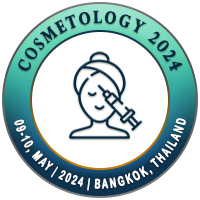
Felicia Aviana
Hang Tuah University, IndonesiaTitle: Steroid-Induced Diabetes Melitus in Pemphigus Vulgaris Patient at Bali Mandara Hospital: A Case Report
Abstract
Pemphigus Vulgaris (PV) is an autoimmune blistering disease of skin and mucous membranes that are defined histologically by intraepidermal blister due to acantholysis. Systemic corticosteroids and immunosuppressive agents had greatly improved the prognosis of pemphigus. However, often steroid use leads to metabolic complications, such as diabetes mellitus. This case report describes steroid-induced diabetes mellitus in PV, where the side effect of long-term high dosages steroid used and the method to manage it can be used as a study case.
A 31-year-old man complained of new blisters from almost the entire body. He had history of PV 1 year ago and no history of diabetes mellitus in the patient or family. He had medication history of methylprednisolone 3x8mg. Dermatological status showed erythema macules, extensive erosion almost on the entire body, the Nikolsky sign (+), and the Asboe-Hansen sign (+). Blood laboratory result: random blood glucose 451mg/dl, HbA1c 12.3%. Histopathological examination: suprabasal blister, which the basal cells still attached to the basement membrane that shows “Tombstone” appearance. The diagnosis was steroid-induced diabetes in pemphigus vulgaris. He was treated with steroid and insulin.
Steroid use in PV treatment can lead to metabolic complications, such as diabetes mellitus. Regularly monitoring is needed to prevent complication due to steroid use.
Biography
Felicia Aviana started her keen interest in dermatology and infectious diseases since undergraduate student in bachelor of medicine. She completed her medical doctor degree in Surabaya, Indonesia. She also had attended several dermatology and infectious diseases conference. She is currently pursuing for her specialization program in microbiology and doing biosecurity and biosafety fellowship.

